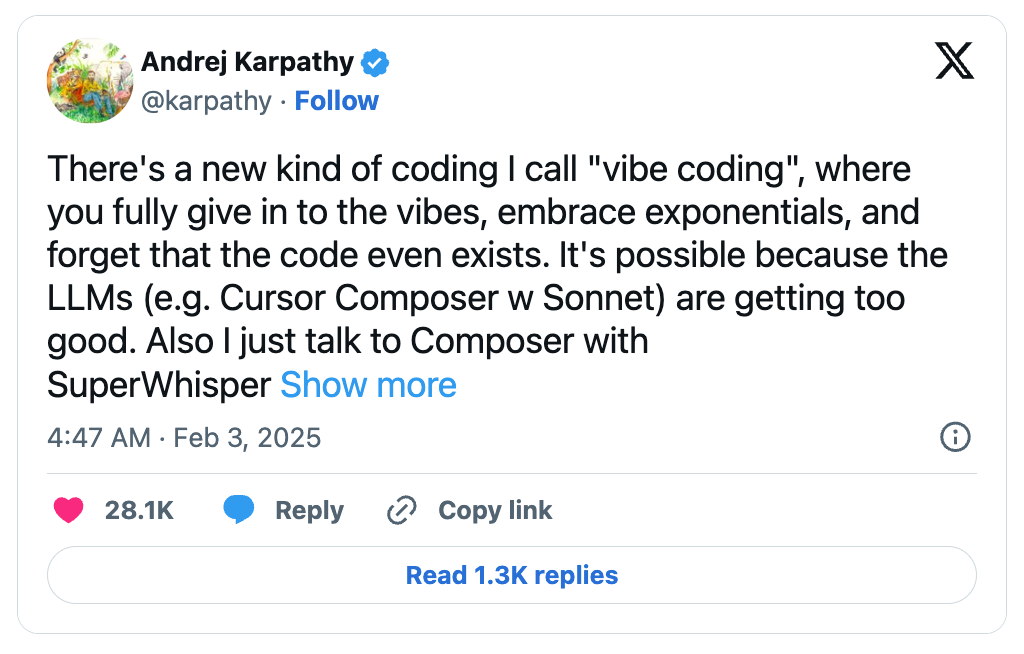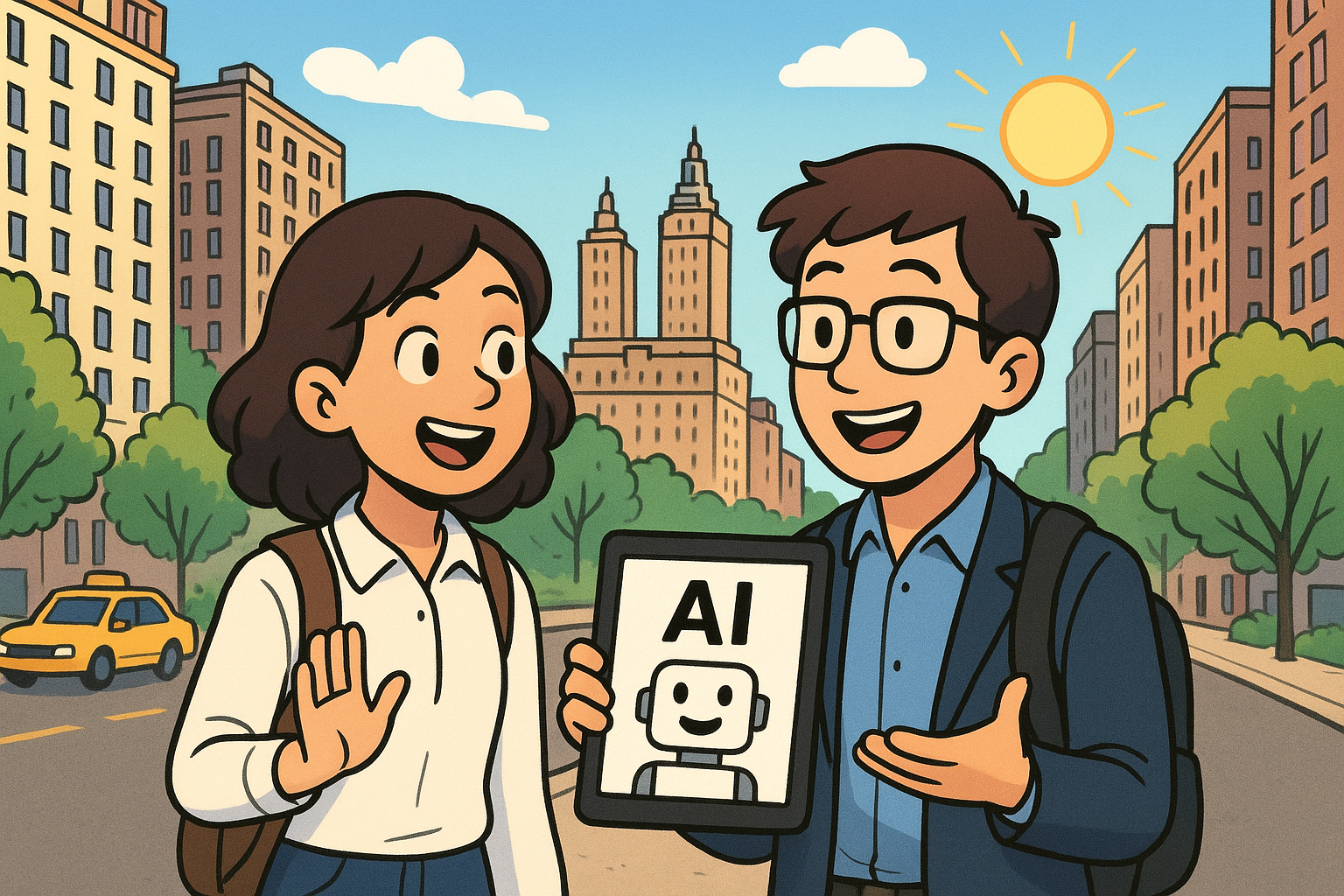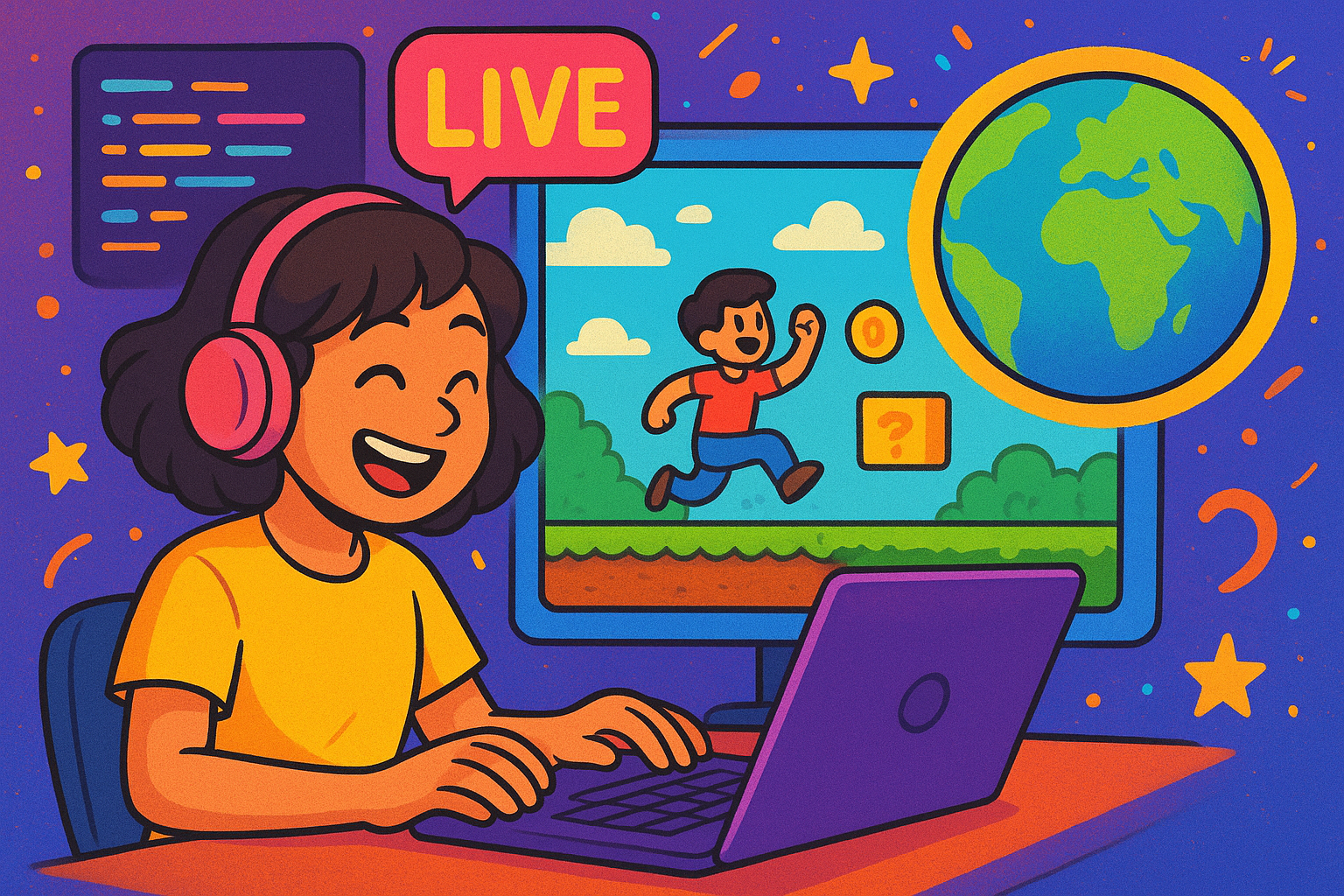Vibecoding 101
On a beautiful sunny day in Upper West Side, I was walking and talking about AI with my school buddy, as all business students seem to do 24/7/365. In the midst of our discussion he mentioned to me…
“I understand that ChatGPT is good for coding but I don’t actually get how people do anything with it” That stuck with me - it was a good reminder that even among those involved in business and tech, the real power of ChatGPT, Claude, Gemini, and others isn’t always obvious. Besides making ghiblis or doing your homework, there’s one benefit I find extraordinary - lowering the barrier to code creation. In its simplest form, vibecoding is just a way that AI makes coding accessible to everyone. Vibing opens the door for everyone to build stuff. And that’s the beauty of it. It lets anyone with an idea simply vibe with AI and end up with something real.

“I’m a real SAAS business application!”
Vibing Origins

Back in early 2025, Andrej Karpathy coined the term “vibecoding” in this tweet. I think this is pretty much correct definition, although people have their unique spin on it. The way I see it, vibecoding is simply using AI to help you code. No Computer Science degree required. No bootcamp. No months of learning syntax. Just you, your idea, and an AI tool.
AI tools like ChatGPT, Claude, and Gemini have gotten so good at writing code that they can build entire things for you. A game. A website. A tool that solves your specific problem. You describe what you want in plain English, and it codes it. That’s the whole magic trick.

DALL-E generated image of “Two businesss school students discussing AI on a sunny day in New York City’s Upper West Side, using a cartoon art style”
A general walkthrough of vibecoding
I am not a programmer by nature myself, but vibecoding has helped me build more than I ever imagined I could have. It helped me build this game, or even this very website. It helped my non-technical friend build his website, and helped countless others build to their hearts’ desires.
It’s not only the simple stuff either. I’ve seen my friend, a former educator, build an application that helps teachers build out entire lesson plans and associated slides. I’ve seen another friend use vibecoding to help him build smart home applications. None of these are earth-shattering, but that doesn’t matter. What matters is that people ideas and they made them real.
If you haven’t tried vibecoding yet, here’s the basic flow:
- You pick an idea for something to build. It can truly be anything, but the recommendation is to always start small (build a tic tac toe game if you don’t have any better ideas)
- You open an AI tool like ChatGPT or Claude and describe what you want - “build me a tic tac toe game” or “create a tool that converts temperatures.”
- The AI gives you code. I typically like to ask the tool to explain what it’s building so you can learn as you go.
- You paste that code into files on your computer using a tool called an IDE (like VS Code or Cursor – these are just apps where you write and organize code…for example, you’re not pasting code into Microsoft Word, you make or paste it in an IDE).
- Then you run it and see what you made. If something doesn’t work or you want to change it, you just tell the AI and it fixes it.
- If you want others to use what you built, you can deploy it online with tools like Netlify or Vercel or any cloud service like Azure or AWS – this can be complicated sometimes, but the AI walks you through this.
That’s it. The AI handles the technical complexity and you handle the strategy and vision. Vibecoding empowers those with drive and vision to create.

DALL-E generated image of “someone vibecoding and creating a game that they are sharing with the world, using a fun and vibrant art style
To get started, I’d literally recommend opening ChatGPT or Claude and typing:
“I’ve never coded before and want to build something simple to get started - maybe a tic tac toe game or [your idea here]. Walk me through the entire process step by step: what tools I need, how to write and organize the code, and how to actually run it on my computer so I can see it work. I want to learn as we go, not just copy and paste. And let me know that I can ask you to change things once it’s working.”
Then just follow along. It seems like a lot the first time, but once you do it once, you’ll realize how straightforward it actually is. And like anything else, the more you do, the more you learn.
The broader point
Does this mean we should vibecode everything? Definitely not. AI still is not as good as our best programmers at producing code. It may produce a lot of it, but it doesn’t mean it’s always right. AI often overcomplicates really simple tasks and that can lead to a plethora of issues. I absolutely do not want AI (at least right now) coding critical software that people’s lives might depend on. AI models are nothing more than a prediction tool and sometimes those predictions can go horribly wrong. For now, and possibly forever, there is always a place for programmers.
However, as you might’ve been able to decipher from this post, I think vibecoding is incredible. It helped me create so much more than I ever could have imagined. It can help you do the same. And I believe creation - building things - is a net positive for society as a whole.
We should build more things. Vibecoding is democratizing that ability like never before. Before, if you had an idea for a simple game or a productivity tool, you had two options: spend months or years learning to code or pay someone else to do it for you. Now, you can sit down on a Saturday afternoon, vibe along with an AI tool, and walk away with something real you created.
This, to me, is more than just individual empowerment, although that is incredible as well. It’s about unleashing human creativity at scale. When more people can build things, we get more solutions to problems we didn’t even know we had before. We get more tools, more games, more experiments, more applications. We get someone who’s sat on a business idea for years finally bringing it to life. We get someone making their first app and having the same incredible feeling of seeing a finished built product as they did when they used to build legos (oh wait that’s me).
Not everyone needs to vibecode nor does everyone need to build anything. But the fact that we can is pretty remarkable. It’s turned this exclusive club into an open sandbox, and everyone is invited to start building sandcastles.

Look at this little man building this awesome sandcastle…needs a moat, though